In 1921, the University of Toronto took over ownership and operation of the Toronto Conservatory and its library collection became the basis for the present-day Music Library. In celebration of our 100-year anniversary, we are in the process of featuring 100 items from our library on Instagram and Facebook. All items were selected by current and past library staff. If you missed them on social media, here they are again. To see all items selected thus far, check out the blog series "100 years at the Music Library". To learn more about the past, present, and future of the U of T Music Library, see the series articles written for Open Shelf, the Ontario Library Association (OLA) magazine: "Becoming University of Toronto Music Library."
The following items were selected and curated by our Music Archivist, Rebecca Shaw.
1931: "Mood Indigo" by Duke Ellington and His Orchestra
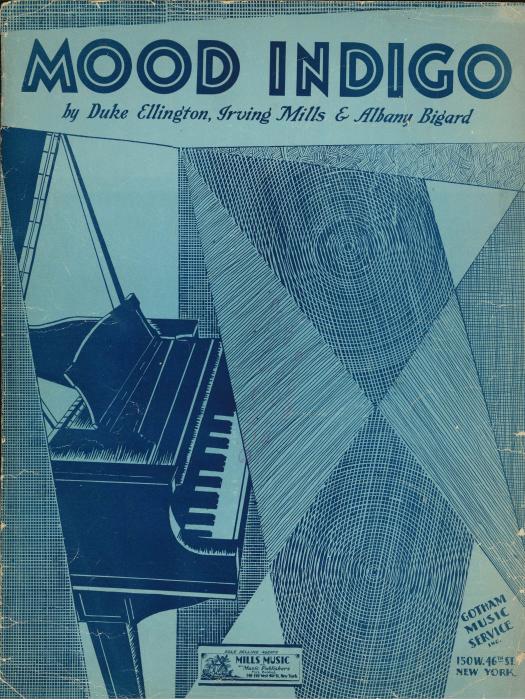 The first recording of the iconic “Mood Indigo” was in 1931 (recorded in 1930) by Duke Ellington and His Orchestra. Since then, it has been recorded numerous times by various artists, including Ella Fitzgerald’s famous 1957 rendition. You can listen to over 50 different recordings of “Mood Indigo” at the Music Library.
The first recording of the iconic “Mood Indigo” was in 1931 (recorded in 1930) by Duke Ellington and His Orchestra. Since then, it has been recorded numerous times by various artists, including Ella Fitzgerald’s famous 1957 rendition. You can listen to over 50 different recordings of “Mood Indigo” at the Music Library.
In the library:
Original sheet music arrangement for piano, published by Mills Music, 1931 (pictured)
Listen to Duke Ellington’s 1931 recording
Ella Fitzgerald sings the Duke Ellington Songbook (1957)
As performed at the Faculty of Music (December 3, 2003)
1932: "La fille aux cheveux de lin" by Claude Debussy, transcribed for violin by Arthur Hartmann
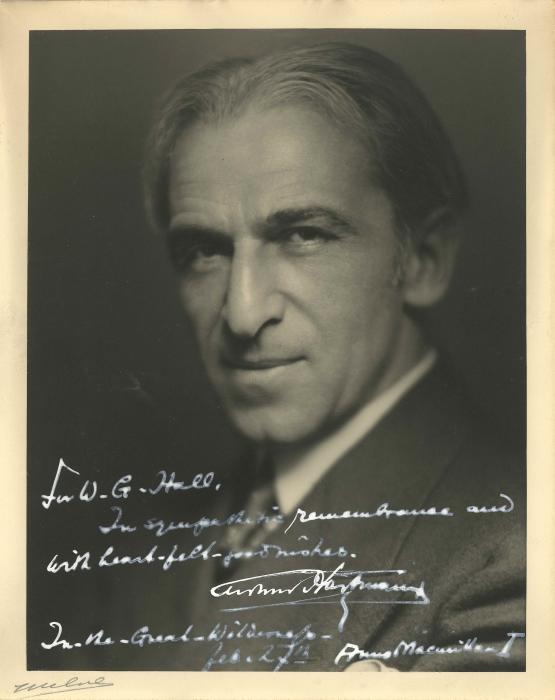
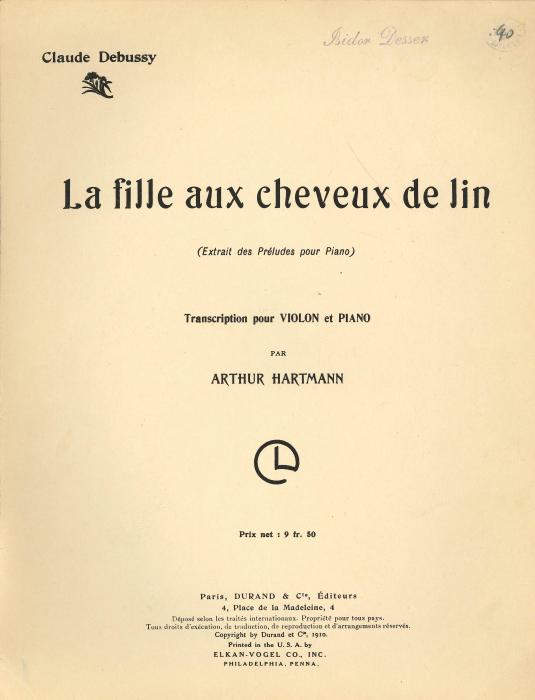
Arthur Hartmann (1881-1956) was an American violinist, composer, and writer, who maintained a studio in Toronto from 1931 to 1933. The Toronto Daily Star hailed him as “among the most distinctive [musical personalities] that have ever lived in this city of many uncommon musical leaders” (November 12, 1932).
As well as his own compositions, Hartmann transcribed several pieces by Debussy for violin and piano, including “La fille aux cheveux de lin” (The girl with the flaxen hair). Read more about Hartmann’s friendship with Debussy in his memoirs, published posthumously in 2003: http://ow.ly/W37M50Dx3Ck.
In the library:
Autographed photograph of Arthur Hartmann (1932) — Inscription: "For W.G. Hall / In sympathetic new entrance and with heartfelt good wishes / In the great wilderness / February 27, Anno MacMillan I [1932]" [“Anno MacMillan I” refers to Ernest MacMillan’s appointment as Music Director of the Toronto Symphony Orchestra for the 1931-1932 concert season following conductor Luigi von Kunits’ sudden death on October 8, 1931.]
Sheet music for “La fille aux cheveux de lin” by Claude Debussy, transcribed by Hartmann for violin
Program from a concert on December 14, 1927 in New York by Canadian violinist Kathleen Parlow, when she performed Hartmann’s arrangement of “La fille aux cheveux de lin”
1933: Billie Holiday
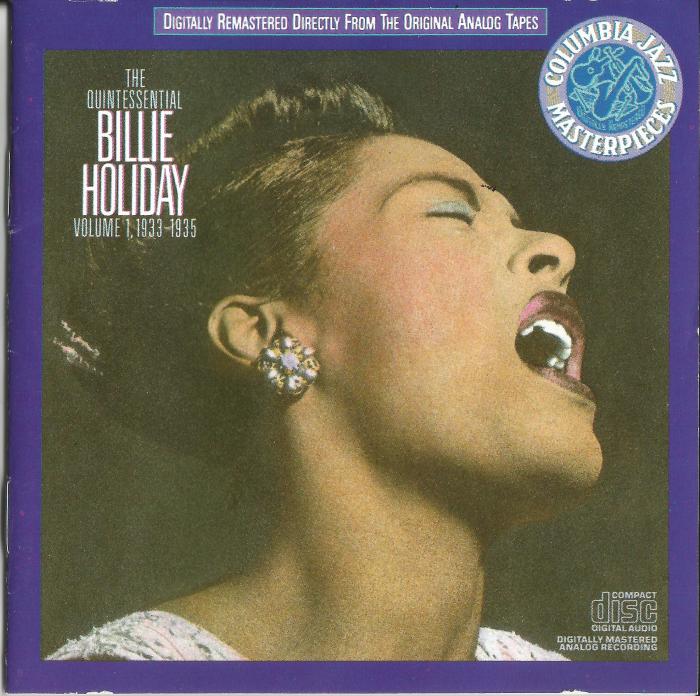 Billie Holiday (1915-1959) made her recording debut in 1933, produced by John Hammond with Benny Goodman leading the studio band. Two of these early recordings were: “Your Mother’s Son-in-Law” (November 27, 1933) and “Riffin’ in the Scotch” (December 18, 1933). They were originally released as a two-sided 78 by Columbia Records (5009-S).
Billie Holiday (1915-1959) made her recording debut in 1933, produced by John Hammond with Benny Goodman leading the studio band. Two of these early recordings were: “Your Mother’s Son-in-Law” (November 27, 1933) and “Riffin’ in the Scotch” (December 18, 1933). They were originally released as a two-sided 78 by Columbia Records (5009-S).
Digitized recordings from the original 78s:
“Your Mother’s Son-in-Law”
“Riffin’ in the Scotch”
In the library:
CD re-release of the 1933 recordings
Portrait of Billie (2007 documentary)
1934: La Fiamma by Ottorino Respighi
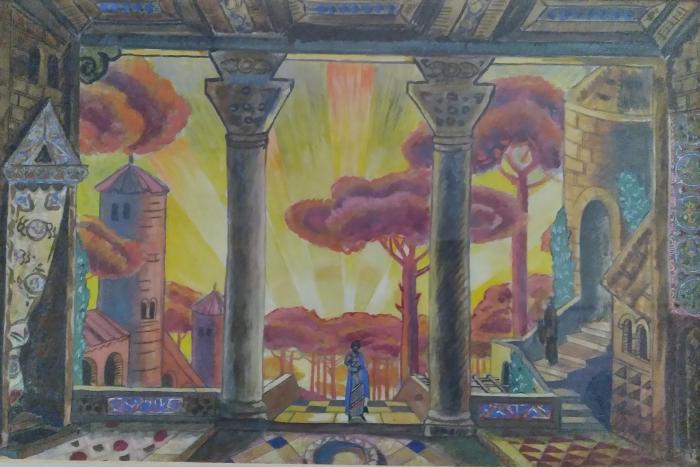
On January 23, 1934, Ottorino Respighi’s opera La Fiamma premiered at the Teatro dell’Opera in Rome. The Music Library has 6 set and costume designs from this production, designed by Nicola Benois, gifted from Casa Ricordi to the Canadian branch of the publishing firm in the 1950s. The set design pictured here is from act 1: Una villa dell'esarca Basilio.
In the library:
Ricordi costume and set designs collection
1935: Edward Johnson at the Met
The Canadian tenor Edward Johnson became the general manager of the Metropolitan Opera in 1935. In December of that year, Met soprano Rosa Ponselle gifted Johnson a scrapbook “to help keep record of your ‘hip family’ of Prima Donnas, Tenors, Baritones, and the rest of your temperamental children, who have and will appear during your regime.” The pages contain programs for Met operas from Dec. 16, 1935 to Feb. 25, 1937, replete with the autographs of each singer and conductor.
For more, see the Edward Johnson collection at the Music Library.
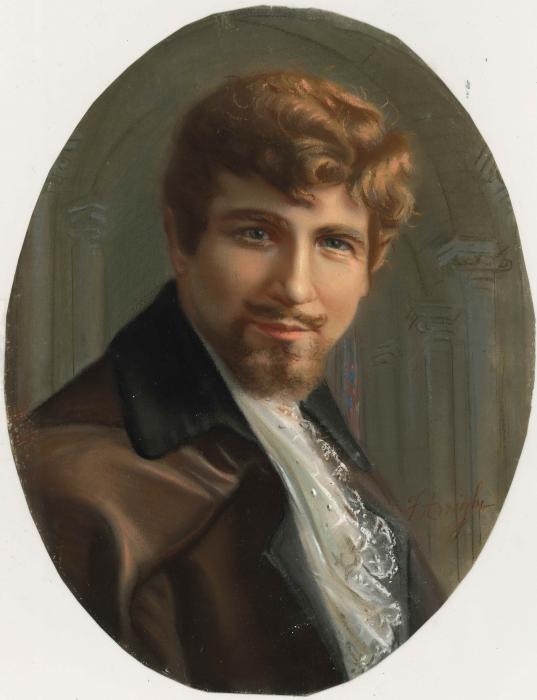
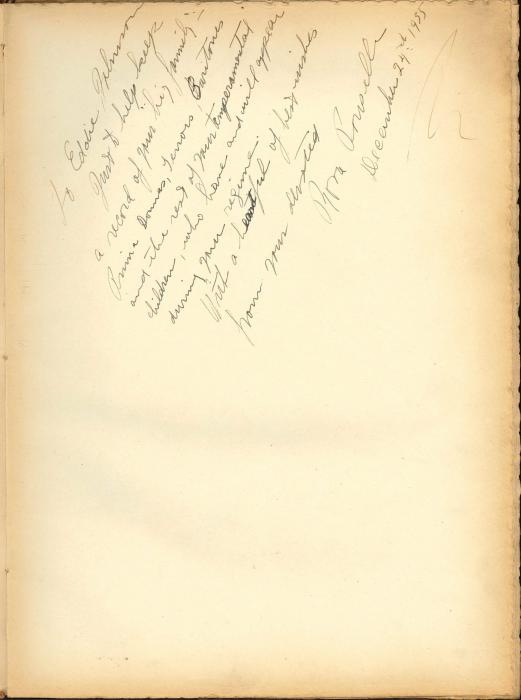
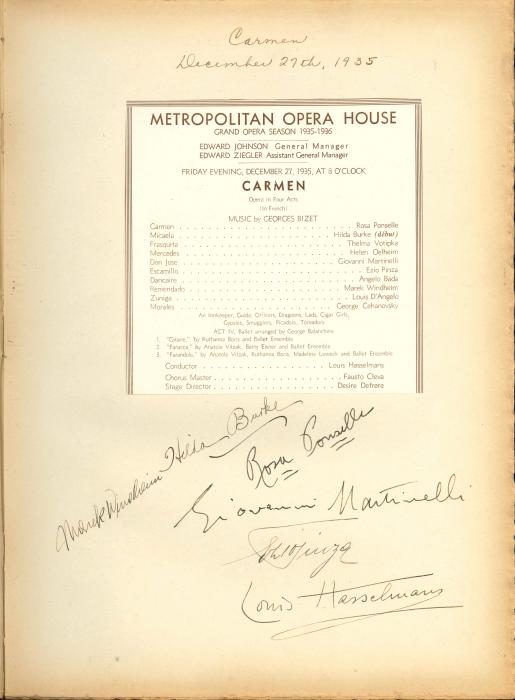
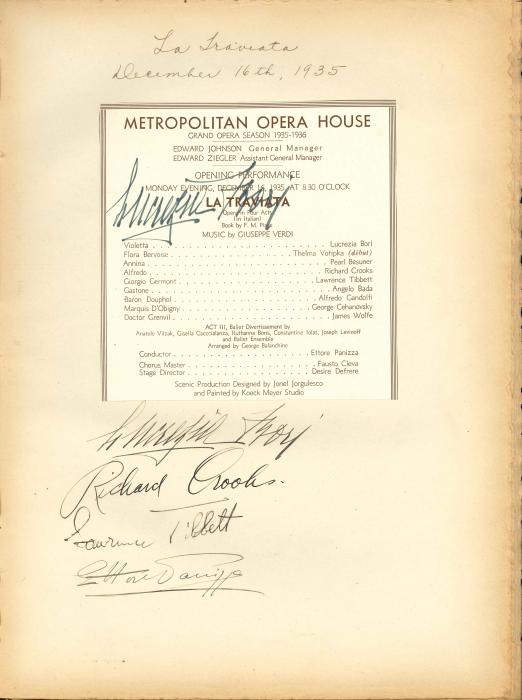
Pictured from the library:
(1) Drawing of Edward Johnson by Flora Arrighi, Firenze, Italy, [ca. 1909-1919]
(2) Inscription in scrapbook from Rosa Ponselle to Edward Johnson
(3) Program and autographs from performance of Carmen (Bizet) on Dec. 27, 1935, featuring Rosa Ponselle as the title character. This role marked the beginning of the end for Ponselle’s career at the Met, and earned her a scathing review in the New York Times from Olin Downes. Ponselle gave her final performance at the Met as Carmen on April 22, 1937.
(4) Program and autographs from performance of La Traviata (Verdi) on Dec. 16, 1935. This was the first Met Opera performance with Edward Johnson as General Manager. It was also the first performance at the Met without the claque (professional applauders). “Throughout the performance many telegrams and cables poured in, wishing the new manager success. His office was filled with floral wreaths…” Read more on this inaugural performance and Johnson’s role as general manager in the New York Times review by H. Howard Taubman.
1936: Ontario Music Teachers' Convention
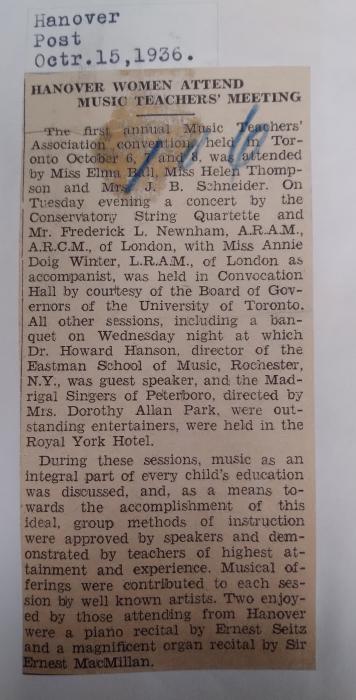
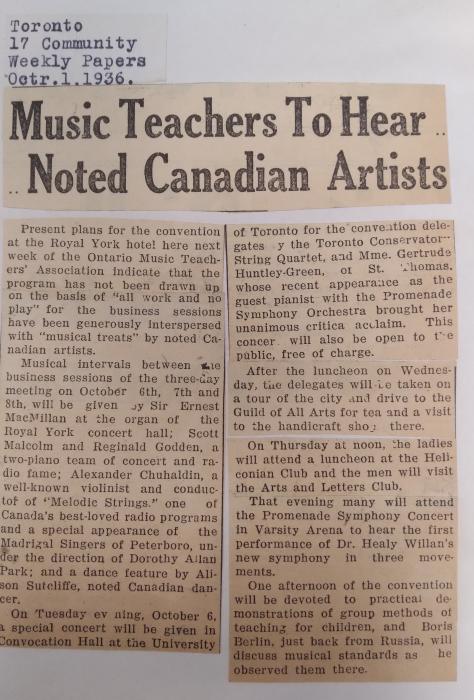
1936 marked the first Ontario Music Teachers Convention, which was held at the Royal York hotel, chaired by Norman Wilks (lecturer, and later principal, at the Toronto Conservatory of Music) and Frank Blatchford (teacher at TCM), head of the convention committee. The object of the association was to “promote progressive ideas and encourage definite preparation in the art of teaching.” More than 400 teachers attended from all over the province.
In the library:
Scrapbook devoted to the newspaper coverage of this convention in the Music Library archives
1937: Alberto Guerrero
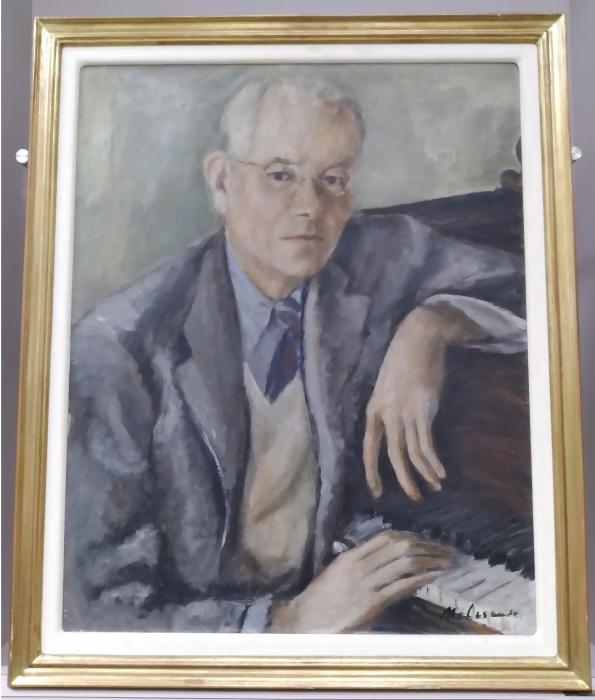 Alberto Guerrero, seen here in a painting by his daughter Melisande Guerrero Irvine, was a pianist, teacher and composer. Born in La Serena, Chile in 1886, he moved to Canada in 1918, where he taught at the Toronto Conservatory of Music and the U of T Faculty of Music. His students included John Beckwith, Glenn Gould, R. Murray Schafer, and Ruth Watson Henderson, to name a few. The Music Library holds his archives, including his manuscripts, programs and reviews, and photographs.
Alberto Guerrero, seen here in a painting by his daughter Melisande Guerrero Irvine, was a pianist, teacher and composer. Born in La Serena, Chile in 1886, he moved to Canada in 1918, where he taught at the Toronto Conservatory of Music and the U of T Faculty of Music. His students included John Beckwith, Glenn Gould, R. Murray Schafer, and Ruth Watson Henderson, to name a few. The Music Library holds his archives, including his manuscripts, programs and reviews, and photographs.
In the library:
Portrait from the Alberto Guerrero fonds
Sheet music for “Southern Seas,” dedicated “To my young friends” (1937)
The New Approach to the Piano (1935-1936), co-written with his second wife Myrtle Rose
In Search of Alberto Guerrero, written by former student John Beckwith (2006)
1938: Emmy Heim
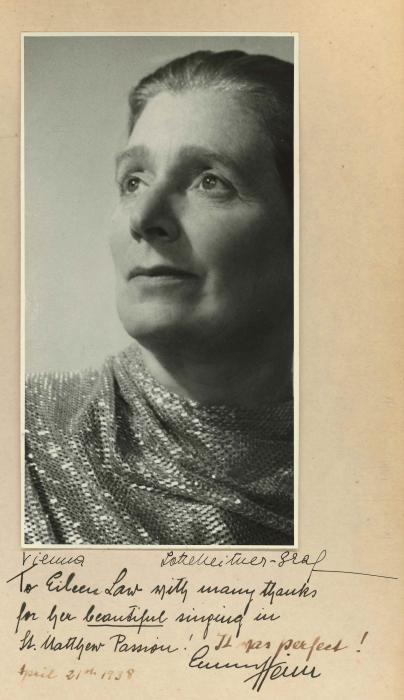
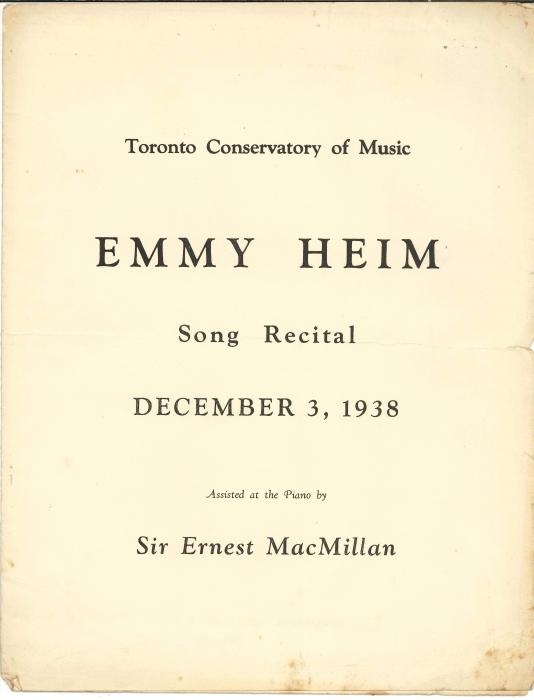
Emmy Heim, a Viennese soprano, gave lecture-recitals at the Toronto Conservatory of Music from 1934 to 1939, and moved to Canada permanently in 1946. The Music Library archives hold her notes (and various other materials) from her lectures on lieder at TCM and the Royal Conservatory of Music in Toronto.
Two of her students, who presumably listened to these lectures, were: Eileen Law, Irish-Canadian contralto, and Lois Marshall, Canadian soprano.
Emmy Heim fonds in the Music Library archives, including:
Autographed photo of Emmy Heim (1938) to Eileen Law, referencing Law’s performance in St. Matthew Passion.
Program from one of Heim’s song recitals at the Toronto Conservatory of Music (December 3, 1938)
1939: "Linden Lea" by Ralph Vaughan Williams
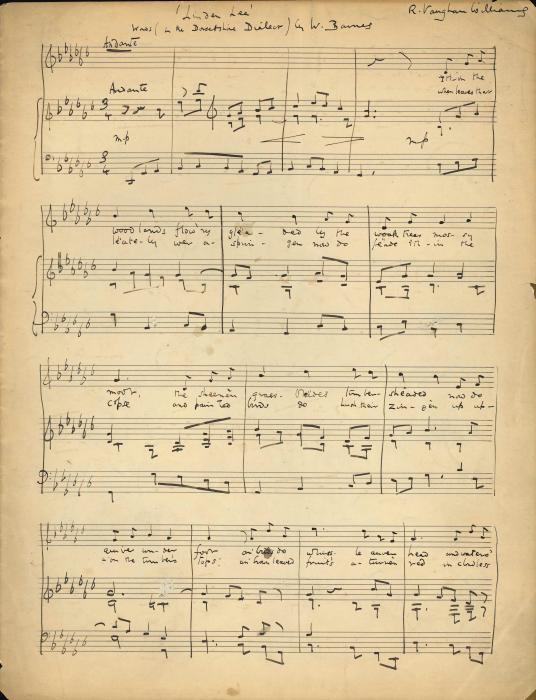 In 1939, baritone James Campbell McInnes presented this fair copy in the composer’s autograph of “Linden Lea” by Ralph Vaughan Williams, to Hart House. Since 1978, it has been on permanent loan to the U of T Music Library. Correspondence with Vaughan William’s widow, Ursula Vaughan Williams, and biographer, Michael Kennedy, confirm that it is likely the original fair copy of the song, being “far too neat” for the original manuscript.
In 1939, baritone James Campbell McInnes presented this fair copy in the composer’s autograph of “Linden Lea” by Ralph Vaughan Williams, to Hart House. Since 1978, it has been on permanent loan to the U of T Music Library. Correspondence with Vaughan William’s widow, Ursula Vaughan Williams, and biographer, Michael Kennedy, confirm that it is likely the original fair copy of the song, being “far too neat” for the original manuscript.
Campbell MacInnes was a friend of Vaughan Williams before the former moved to Canada, and sang much of his music, including the premiere performance of A Sea Symphony.
“Linden Lea,” composed in 1901, is Vaughan William’s earliest widely-known composition, and sets a poem by William Barnes. It was premiered at the village of Hooton Roberts in Yorkshire, while Vaughan Williams was there staying with friends.
In the library:
Catalogue record
1940: Les Illuminations by Benjamin Britten
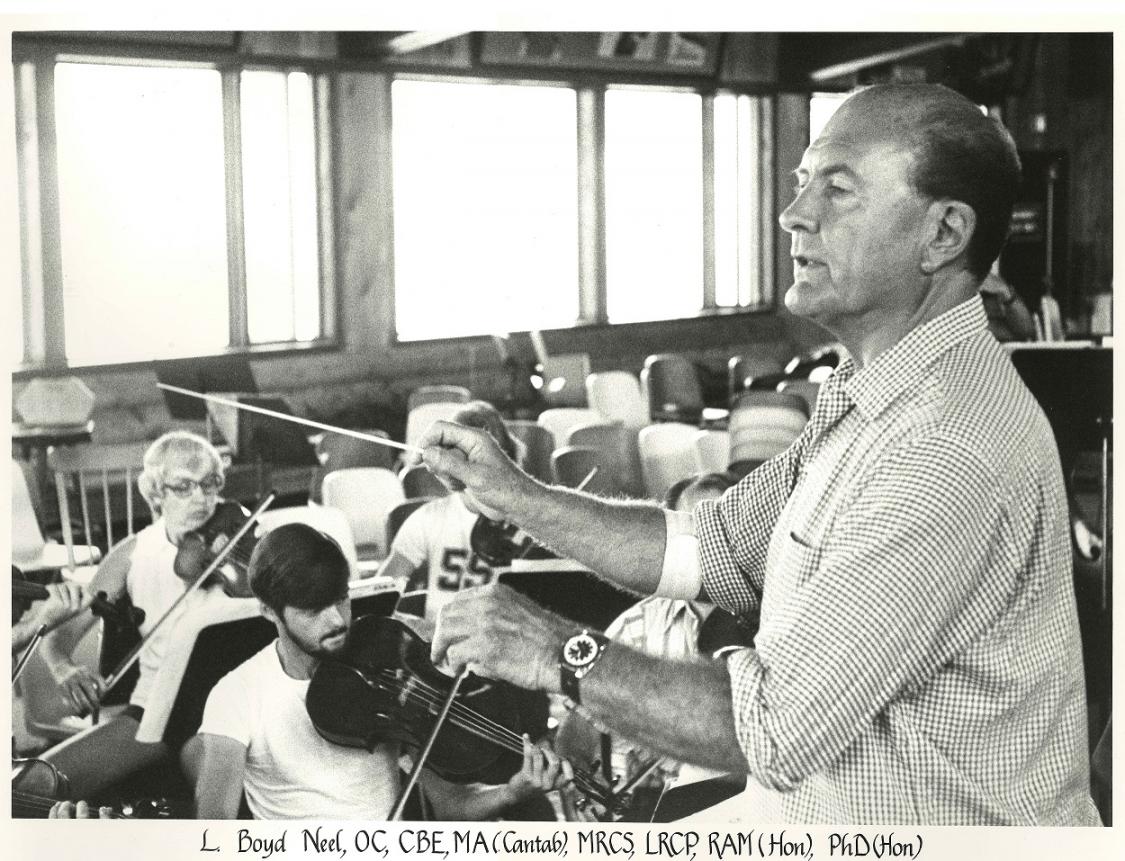
The first performance of Benjamin Britten’s Les Illuminations was by the Boyd Neel Orchestra and Sophie Wyss, soprano, in January 1940 at the London Contemporary Music Centre. For the performance, Boyd Neel used 2 miniature scores, 1 full score, and a separate French text with English translation, as indicated in his Music Library Catalogue that he kept for his orchestra.
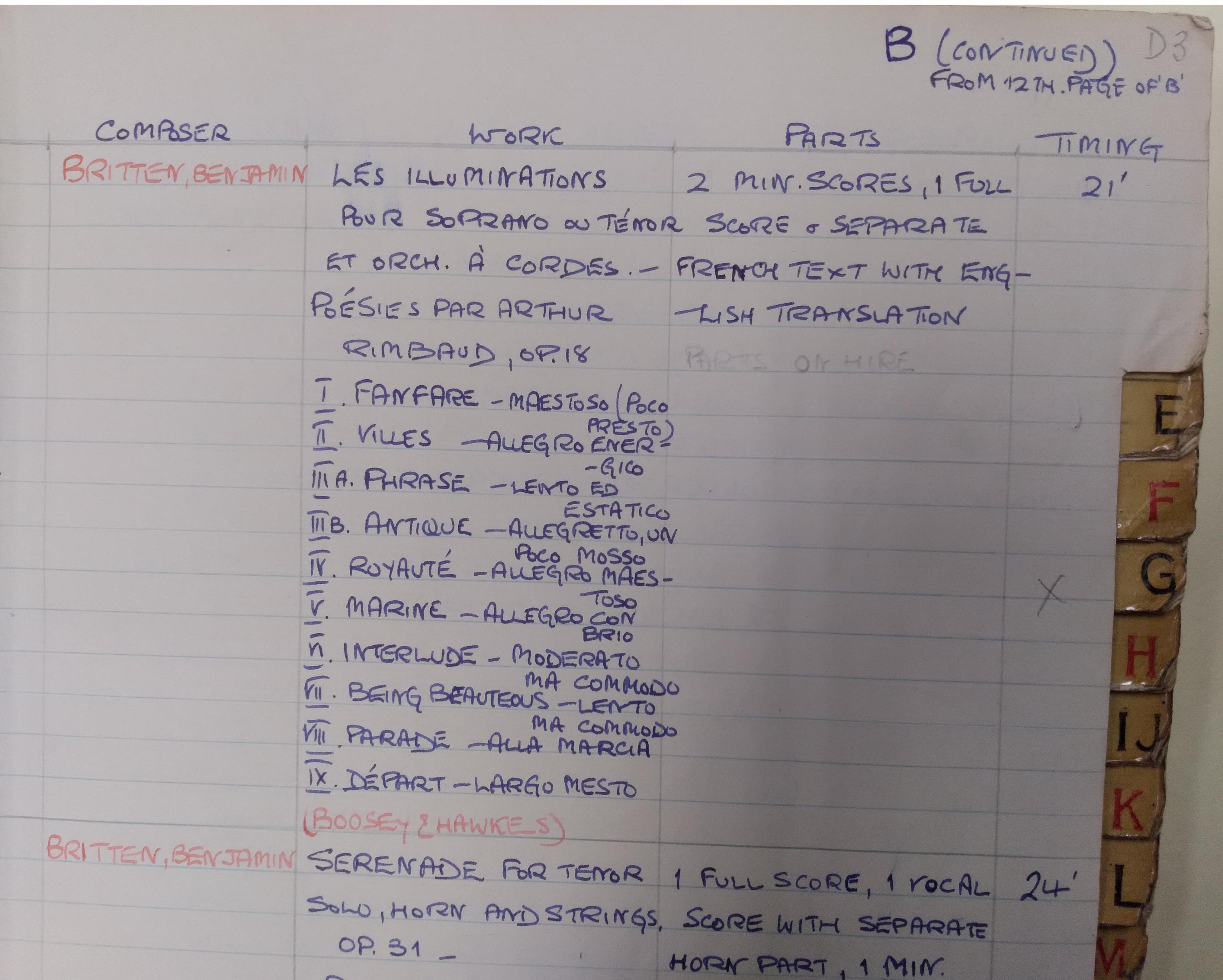
Boyd Neel formed his orchestra in London in 1932, and one of their first collaborations with Benjamin Britten was in 1937, when Neel commissioned Variations on a Theme of Frank Bridge for performance at the Salzburg Festival.
After moving to Canada, Neel was appointed Dean of the Royal Conservatory of Music, including U of T’s Faculty of Music, a position that he held from 1953 until 1971. During his tenure, he oversaw the campaign and subsequent construction of the Edward Johnson Building.
Boyd Neel’s catalogues and many of his orchestra sets were donated to the Music Library in 1989.
In the library:
Boyd Neel fonds in the Music Library archives
Boyd Neel’s memoirs